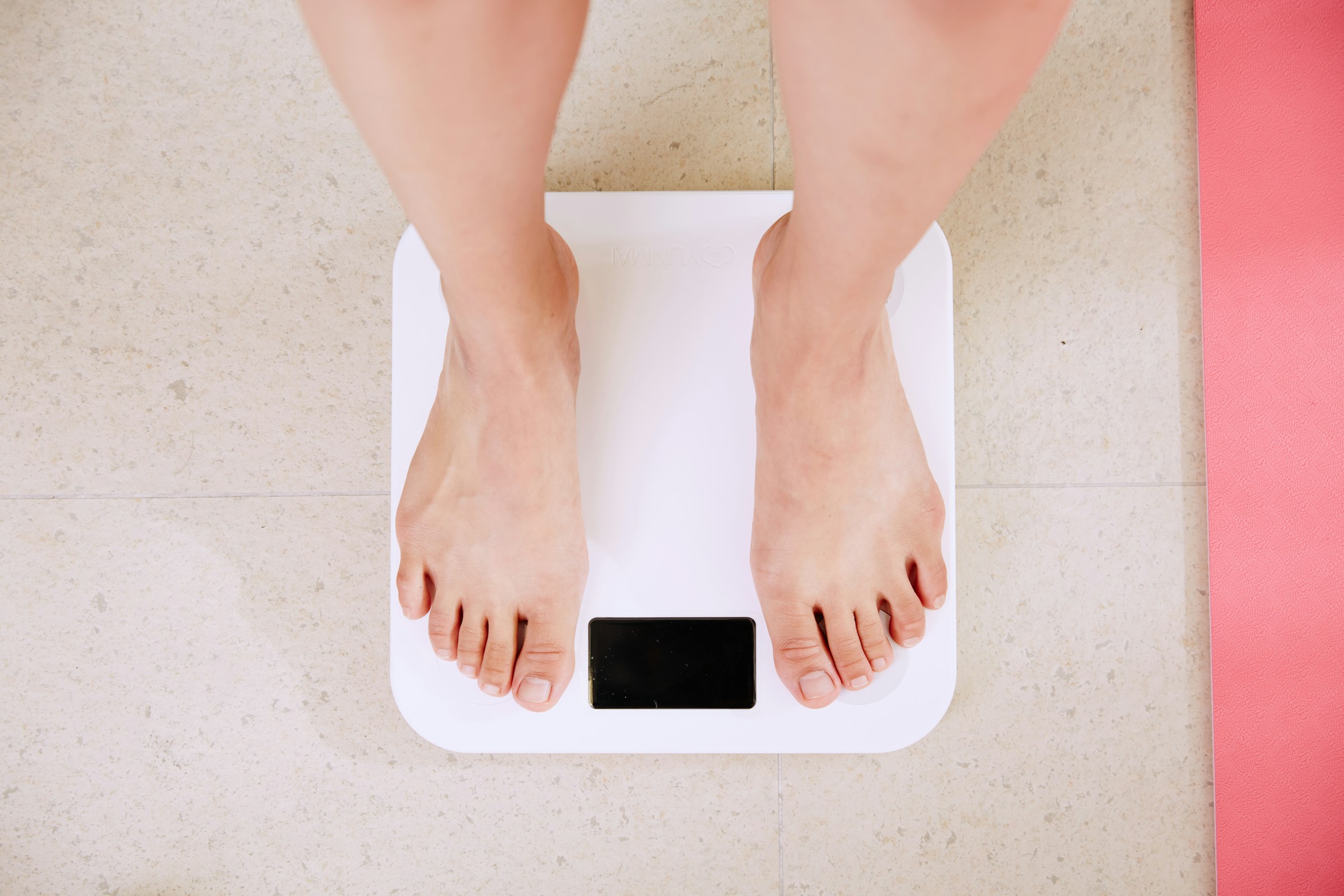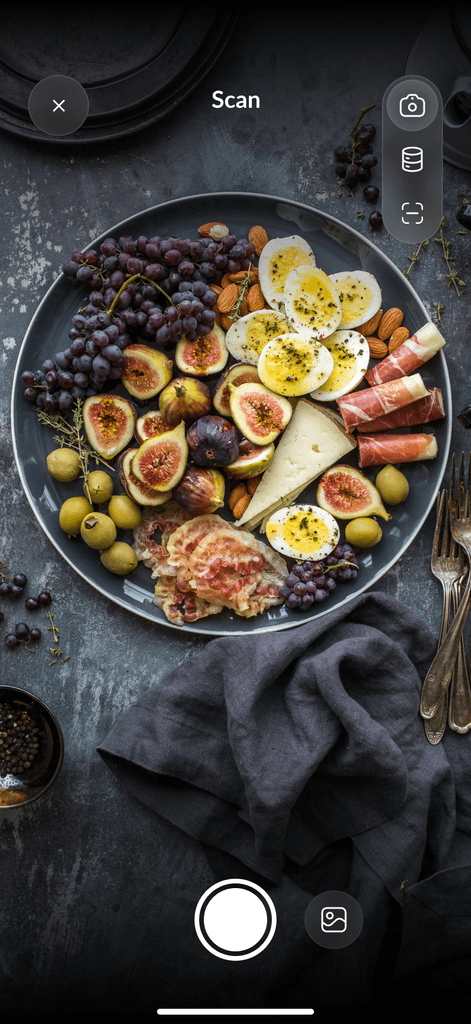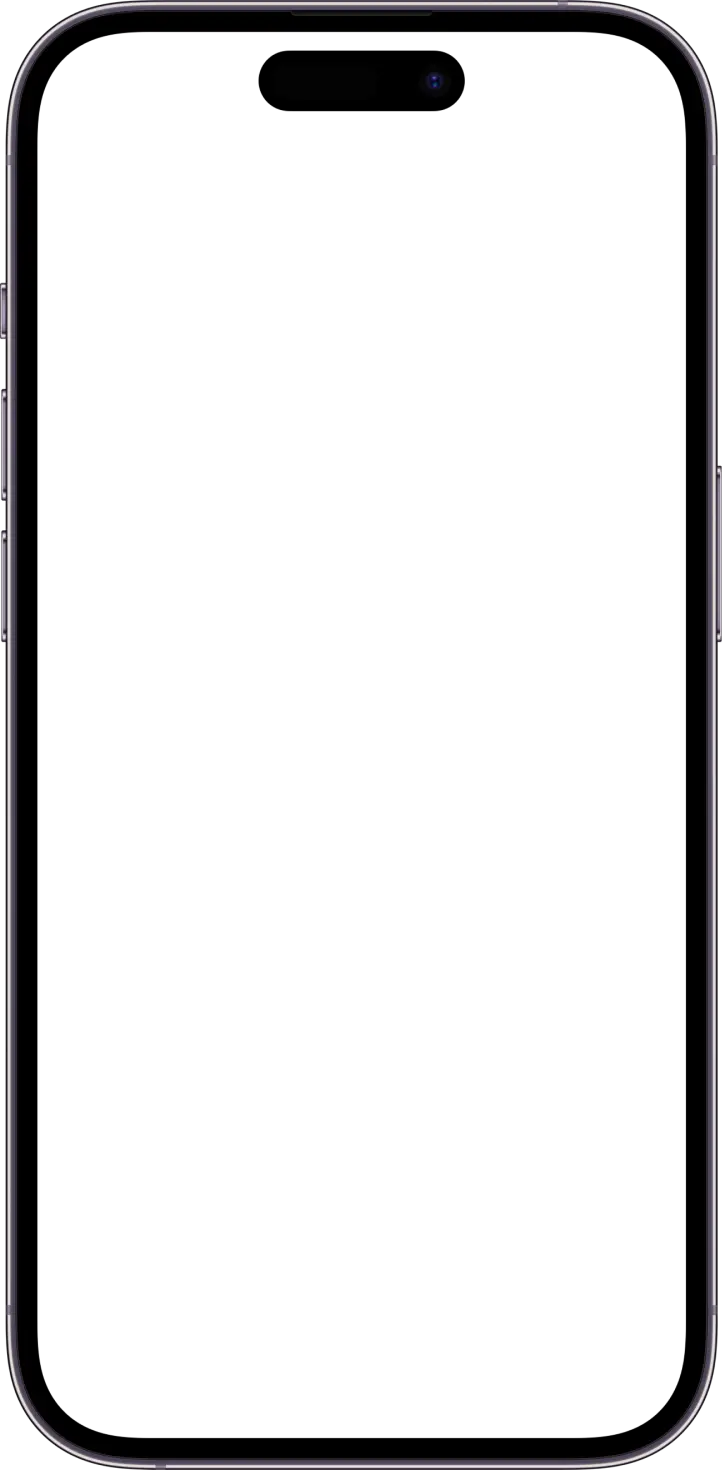When losing weight, we often must choose between different diets or approaches to see results. But that's not entirely true. Take ketosis and calorie deficit, for example. Both methods effectively help you shed pounds, but they approach it differently. But, what are macros and micros?
For instance, a calorie deficit focuses on what you eat, while ketosis changes your body’s energy source. This guide will help you understand the differences between ketosis and calorie deficit so that you can pick the best option for your body and goals. We'll also introduce you to DietAI's calorie counter, a simple tool for counting calories faster to stay on track and reach your goals.
Table of Contents
What is Ketosis Diet?

Ketosis is a metabolic state where fat, not glucose, becomes your body’s primary fuel source. Under normal circumstances, your body uses glucose, which comes from carbohydrates, for energy. Even though all macronutrients can be converted into energy by the body, glucose is the preferred source. Your body gets glucose from the foods you eat. Carbohydrates like sugary snacks, bread, pasta, and fruits break into glucose during digestion.
Your body uses what it needs for energy and stores the rest in the liver for later use. However, when you decrease your carbohydrate intake, your glucose stores deplete. As a result, your body begins to search for an alternative fuel source. That backup source is fat. During ketosis, your body breaks down fat stores into compounds called ketones for energy instead of glucose. These ketones replace glucose as the primary energy source for your body and brain.
The fat your body breaks down for energy may come from dietary sources or your fat stores. Following a ketogenic diet, your body gets more fat from your food. However, your liver also produces small amounts of ketones naturally. When your carbohydrate intake is low, your insulin levels decrease. This decrease signals your liver to ramp up ketone production to ensure your brain has enough energy to function. This process results in boosted levels of ketones in the blood.
What is the Ketogenic Diet?
The ketogenic diet changes the way your body uses food. Typically, carbohydrates in your diet provide most of the fuel your body needs. The keto diet reduces the number of carbs you eat and teaches your body to burn fat for fuel instead. The keto diet is high in fat, moderate in protein, and low in carbohydrates. The standard keto diet comprises 70 to 80% fats, 10 to 20% proteins, and 5 to 10% carbohydrates. Many nutrient-rich foods contain high amounts of carbohydrates. This includes whole grains, fruits, and vegetables. Carbs from all sources are restricted on the keto diet. So you’ll have to cut out all bread, cereal, and other grains and severely cut your fruit and vegetable intake.
The foods that provide fat for the keto diet include
Meats and fish.
Eggs.
Nuts and seeds.
Butter and cream.
Cheese.
Oils such as olive oil and canola oil.
What is a Calorie Deficit Diet?

The Calorie Deficit Diet: Weight Loss 101
A calorie deficit occurs when you consume fewer calories than you burn. People use a calorie deficit to shed excess weight and maintain weight loss. “If you want to lose weight with a calorie deficit, I suggest tracking what you’re currently eating before making any changes,” says Czerwony. “It’s good to understand your starting point.” Use a food diary app to record what you eat and how many calories you consume over a week or two. (An app is a very convenient way to track eating habits.) Then, you can use a calorie deficit calculator to determine your daily calorie target to meet your goal.
How to Create a Calorie Deficit Safely
How big of a calorie deficit should you start with? A daily 500-calorie deficit should allow you to lose about a pound a week — and possibly even a bit more, says Czerwony. “Eating 500 fewer calories per day is a good place to start,” she adds. She says another option is to do a smaller calorie deficit — 200 or 300 calories a day — combined with increasing your daily exercise. Losing one pound a week may not sound like a lot, but slower weight loss will likely stick in the long term. And it’s easier for your body to adjust to a smaller calorie deficit than a larger one. If you start with too big of a calorie deficit, you’re likely to have some unpleasant side effects, such as:
Fatigue.
Nausea.
Dehydration.
Constipation.
Headaches.
Crabbiness.
Even with a 500-calorie deficit, adjusting your body can take time. You may not lose any weight for the first week or two. “If you do lose weight in the first week, you’re probably dropping water weight,” explains Czerwony. “This is usually due to cutting some of the junkier carbs and salt from your diet.” After that, the fat loss begins. DietAI transforms calorie counting with our AI calorie-counting app. Take a picture of your food, and our app instantly analyzes your meals from a simple photo, delivering accurate calorie and macro information without manual logging. Beyond photo recognition, the app provides comprehensive progress tracking, personalized nutrition insights tailored to your goals, and convenient barcode scanning for packaged foods.
Whether trying to lose weight, gain muscle, or simply maintain a balanced diet, DietAI makes nutrition tracking effortless by eliminating the tedious aspects of traditional food journaling. Download now to effortlessly track your calories and macros with DietAI, the AI-powered app that makes logging meals as simple as snapping a photo. Download today for 80% off!
Related Reading
• Do Minerals Have Calories
• How Long in a Calorie Deficit to See Results
• How to Use a Food Scale to Lose Weight
• Can You Eat Pizza on a Diet
• Do Carbs Make You Fat
• Why Am I Not Losing Fat in a Calorie Deficit
• What Are Net Calories
• Is the Fitness App Accurate
• How Many Calories Below Bmr to Lose Weight
Ketosis vs Calorie Deficit: Detailed Comparison

1. Understanding the Core Concepts
Ketosis (Ketogenic Diet)
The ketogenic diet focuses on getting your body into a metabolic state called ketosis. This happens when you drastically reduce your carbohydrate intake (usually under 50 grams daily), increase your fat intake, and moderate your protein consumption. In ketosis, the liver converts fats into ketones, which become the body’s primary fuel source instead of glucose. A ketogenic diet typically comprises 70% to 80% fat, 15% to 20% protein, and 5% to 10% carbs. The goal is to train the body to become fat-adapted, efficiently burning stored fat for energy. This can lead to faster fat loss and other metabolic benefits.
Calorie Deficit
A calorie deficit, on the other hand, is not a specific diet but rather a fundamental principle of weight loss: You consume fewer calories than your body needs to maintain its current weight. This can be achieved through any combination of eating habits or exercise, and it doesn’t require you to follow a specific macronutrient ratio. The deficit forces your body to tap into stored energy (usually fat) to make up the difference.
2. Fat Loss Mechanism
Ketosis
In ketosis, your body has minimal access to glucose, switching to burning fat for energy. This fat-burning state is more direct than in a typical calorie deficit. Additionally, since insulin levels remain low in ketosis (because carbs spike insulin), it can enhance fat breakdown and reduce fat storage. Some people experience rapid initial weight loss on keto due to glycogen depletion and water loss. Over time, however, it’s the sustained fat burning that drives progress.
Calorie Deficit
In a calorie deficit, fat loss happens due to energy imbalance. The body needs more energy than it receives from food, so it starts breaking down fat (and sometimes muscle) to meet energy needs. This process isn’t as metabolically focused on fat as ketosis, but it's still scientifically proven effective. Unlike keto, the type of macronutrients consumed doesn’t necessarily matter as long as the overall caloric intake is lower than output.
3. Dietary Flexibility
Ketosis
The ketogenic diet is highly restrictive. It eliminates or drastically limits several food groups, including grains, most fruits, starchy vegetables, legumes, and anything high in sugar. For many, this level of restriction makes keto hard to maintain, especially in social settings or when dining out. The risk of nutrient deficiencies (e.g., fiber, B vitamins) is also higher unless carefully planned.
Calorie Deficit
A calorie deficit allows for greater flexibility. If you stay under your calorie target, you can eat from all food groups, making it more adaptable to various lifestyles, cultures, and food preferences. A balanced diet is easier to sustain long-term and less likely to lead to nutritional deficiencies.
4. Appetite and Satiety
Ketosis
One of keto’s key benefits is appetite suppression. Ketones and high-fat and moderate-protein intake tend to keep you fuller for longer. The diet reduces ghrelin levels (the hunger hormone) and may eliminate cravings for sugary foods, making it easier to naturally eat less without obsessively tracking calories.
Calorie Deficit
In contrast, being in a calorie deficit can sometimes increase hunger, especially if the deficit is too large or the diet lacks fiber, protein, and healthy fats. You may feel more cravings or energy dips. Managing hunger becomes a skill through food volume strategies, mindful eating, and proper macronutrient balance.
5. Physical Performance and Energy Levels
Ketosis
Many people on keto experience an initial "keto flu"—low energy, headaches, and fatigue—as the body adapts to using fat for fuel. While some eventually report steady energy levels and improved mental clarity, others may struggle with high-intensity workouts due to limited glycogen (stored carbs). Keto is generally better suited for low-to-moderate intensity activities.
Calorie Deficit
A calorie deficit generally allows more flexibility in fueling workouts, especially if carbs are still included in the diet. However, a low-calorie intake may still reduce energy and performance. Many people maintain or improve their performance if managed well (with sufficient protein and carbs).
6. Health Impacts and Side Effects
Ketosis
Keto has shown promise in improving insulin sensitivity, lowering blood sugar, and potentially reducing inflammation. It's even used as a therapeutic diet for conditions like epilepsy and metabolic syndrome. However, potential side effects include constipation, bad breath, increased cholesterol in some individuals, and nutrient deficiencies if not supplemented correctly.
Calorie Deficit
A calorie deficit can be achieved healthily or unhealthily. If done correctly, it can improve blood pressure, blood sugar, and cholesterol. But overly restrictive calorie deficits or fad diets can lead to muscle loss, hormonal imbalances, and fatigue. Food quality still matters—a poor diet with low calories might result in weight loss but not health.
7. Sustainability and Lifestyle Fit
Ketosis
While effective for many, keto can be difficult to stick with long-term due to its strict carb limits. It requires planning, label-reading, and often cooking at home. Some people thrive on it; others find it socially isolating or emotionally restrictive.
Calorie Deficit
This approach is usually more sustainable and lifestyle-friendly. It allows for treats in moderation, more social flexibility, and fewer rules. You can fit it into a Mediterranean, plant-based, or traditional diet framework. Health professionals often recommend it as a more balanced approach to long-term weight management.
Related Reading
• Carnivore Macros for Weight Loss
• How to Track Calories When Eating Out
• Weight Watchers vs Calorie Counting
• Macros for Mediterranean Diet
• How to Stick to a Calorie Deficit
• Losing Weight and Gaining Muscle
• How to Track Alcohol Macros
• Macros for 1200 Calorie Diet
• Intermittent Fasting and Macros
• Macros for Pcos Weight Loss
• Paleo Macro
Ketosis Meal Plan to Get You Started

1. DietAI: The Smart Way to Track Your Meals
DietAI transforms calorie counting with our AI calorie-counting app. Take a picture of your food, and our app instantly analyzes your meals from a simple photo, delivering accurate calorie and macro information without manual logging. Beyond photo recognition, the app provides comprehensive progress tracking, personalized nutrition insights tailored to your goals, and convenient barcode scanning for packaged foods. Whether trying to lose weight, gain muscle, or simply maintain a balanced diet, DietAI makes nutrition tracking effortless by eliminating the tedious aspects of traditional food journaling. Download now to effortlessly track your calories and macros with DietAI, the AI-powered app that makes logging meals as simple as snapping a photo. Download today for 80% off!
2. Monday
Breakfast
Veggie and egg muffins with tomatoes
Lunch
Chicken salad with olive oil, feta cheese, olives, and a side salad.
Dinner
Salmon with asparagus cooked in butter
3. Tuesday
Breakfast
Egg, tomato, basil, and spinach omelet
Lunch
Almond milk, peanut butter, spinach, cocoa powder, and stevia make a delicious milkshake (there are more keto smoothies here) with sliced strawberries.
Dinner
Cheese-shell tacos with salsa
4. Wednesday
Breakfast
Nut milk chia pudding topped with coconut and blackberries
Lunch
Avocado shrimp salad
Dinner
Pork chops with Parmesan cheese, broccoli, and salad
5. Thursday
Breakfast
Omelet with avocado, salsa, peppers, onion, and spices
Lunch
A handful of nuts and celery sticks with guacamole and salsa
Dinner
Chicken stuffed with pesto and cream cheese, and a side of grilled zucchini
6. Friday
Breakfast
Sugar-free Greek, whole milk yogurt with peanut butter, cocoa powder, and berries
Lunch
Ground beef lettuce wrap tacos with sliced bell peppers
Dinner
Loaded cauliflower and mixed veggies
7. Saturday
Breakfast
Cream cheese pancakes with blueberries and a side of grilled mushrooms
Lunch
Zucchini and beet “noodle” salad
Dinner
White fish cooked in olive oil with kale and toasted pine nuts
8. Sunday
Breakfast
Fried eggs with mushrooms
Lunch
Low-Carb Sesame Chicken and Broccoli
Dinner
Spaghetti squash Bolognese. Always try to rotate the vegetables and meat over the long term, as each type provides different nutrients and health benefits.
Download DietAI Today for 80% Off!
Macros, short for macronutrients, are nutrients that provide us with energy. There are three primary macronutrients: carbohydrates, protein, and fat. Each of these plays a different role in keeping us healthy. Carbohydrates are the body’s preferred fuel source, while protein is essential for building and repairing tissues. Fats are also vital for health, helping our bodies absorb specific vitamins and providing energy. Micros, or micronutrients, are the vitamins and minerals found in foods. Unlike macronutrients, micronutrients don’t provide energy. Instead, they help regulate body processes and boost our immune systems. Micronutrients are essential for good health, and deficiencies can lead to serious health problems.
What Are Macros and Micros and Why Do They Matter?
Counting macros and micros can help you meet your health and fitness goals. For example, if you want to lose weight, tracking your macros can help you identify the right balance of nutrients to help you reach your goals while preserving muscle mass. If you want to build muscle, adjusting your macros to prioritize protein can help you pack on muscle more efficiently. Tracking micros can help ensure you don’t develop deficiencies while pursuing your goals. Counting macros and micros isn’t about perfect adherence. Instead, it can help you create a more balanced approach to eating that aligns with your goals.
DietAI transforms calorie counting with our AI calorie-counting app. Take a picture of your food, and our app instantly analyzes your meals from a simple photo, delivering accurate calorie and macro information without manual logging. Beyond photo recognition, the app provides comprehensive progress tracking, personalized nutrition insights tailored to your goals, and convenient barcode scanning for packaged foods. Whether trying to lose weight, gain muscle, or simply maintain a balanced diet, DietAI makes nutrition tracking effortless by eliminating the tedious aspects of traditional food journaling. Download now to effortlessly track your calories and macros with DietAI, the AI-powered app that makes logging meals as simple as snapping a photo. Download today for 80% off!
Related Reading
• Vegan Macros
• Endomorph Macros for Fat Loss
• Hitting Macros but Not Calories
• Macros for Menopause Weight Loss
• Macros for Bariatric Patients
• Nutracheck vs Myfitnesspal
• Noom vs Myfitnesspal
• MacroFactor vs Carbon


